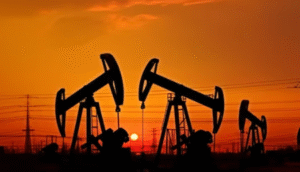$OIL $BRENT $USDRUB
#Russia #OPEC #OilProduction #EnergyMarket #CrudeOil #OilPrices #BrentCrude #OPECPlus #RussianEconomy #Commodities #OilSupply #EnergyCrisis
Russia’s oil production in 2025 is expected to be slightly lower compared to 2024 as the country works to balance its prior overproduction in alignment with the OPEC+ quotas. Russian Deputy Prime Minister Alexander Novak stated that this year’s production is projected to fall within the range of 515 million tons to 520 million tons, according to reports from Russian news agency TASS. This estimate sits marginally below the 516 million tons produced by Russia in 2024. The slight reduction underscores Russia’s continued coordination with OPEC+ to manage global oil supply levels. While oil output declines, Novak noted that the country’s oil processing levels are expected to increase in 2025, potentially mitigating some of the economic impacts from the lower production levels.
The decision to curtail output comes amid the broader OPEC+ strategy of maintaining production quotas to stabilize global oil prices. The cartel and its allies have been actively managing production targets to counter market fluctuations and unexpected supply shifts. Given Russia’s significant role in the global energy markets, any adjustment in its output can influence crude oil prices worldwide. A slightly lower production level could offer some upward pressure on prices, particularly in an environment where geopolitical risks and supply-chain disruptions continue to affect crude markets. However, the increase in oil processing by Russia suggests a potential strategic shift towards refining products, which could lead to higher exports of refined petroleum goods.
From a financial markets perspective, the prospect of lower Russian oil production in 2025 may lead to volatility in global benchmarks such as Brent Crude and West Texas Intermediate (WTI). Investors closely monitor production shifts within OPEC+ nations, as these decisions directly influence supply dynamics and pricing. If Russia adheres strictly to its announced production range, markets could see added resilience in crude prices, particularly if demand continues to recover. Conversely, any deviations from these projected figures could introduce uncertainty, further impacting currency markets, particularly the Russian ruble ($USDRUB), which is historically sensitive to swings in energy revenues. Additionally, oil-related equities and exchange-traded funds (ETFs) may experience fluctuations in reaction to any major developments in Russia’s energy output strategy.
Despite the projected dip in oil production, Russia’s energy sector remains a cornerstone of its economy, with ongoing efforts to adapt and reallocate resources. The anticipated rise in oil processing suggests a potential increase in exports of refined products, which may soften any negative economic consequences. If processing capacities expand and exports rise, Russia could maintain key revenue streams despite lower crude output. This strategic recalibration highlights the country’s intent to sustain its influence in global energy markets while adhering to OPEC+ commitments. As the year progresses, both investors and market analysts will closely watch how these developments impact global oil pricing and the broader commodity landscape.











Comments are closed.